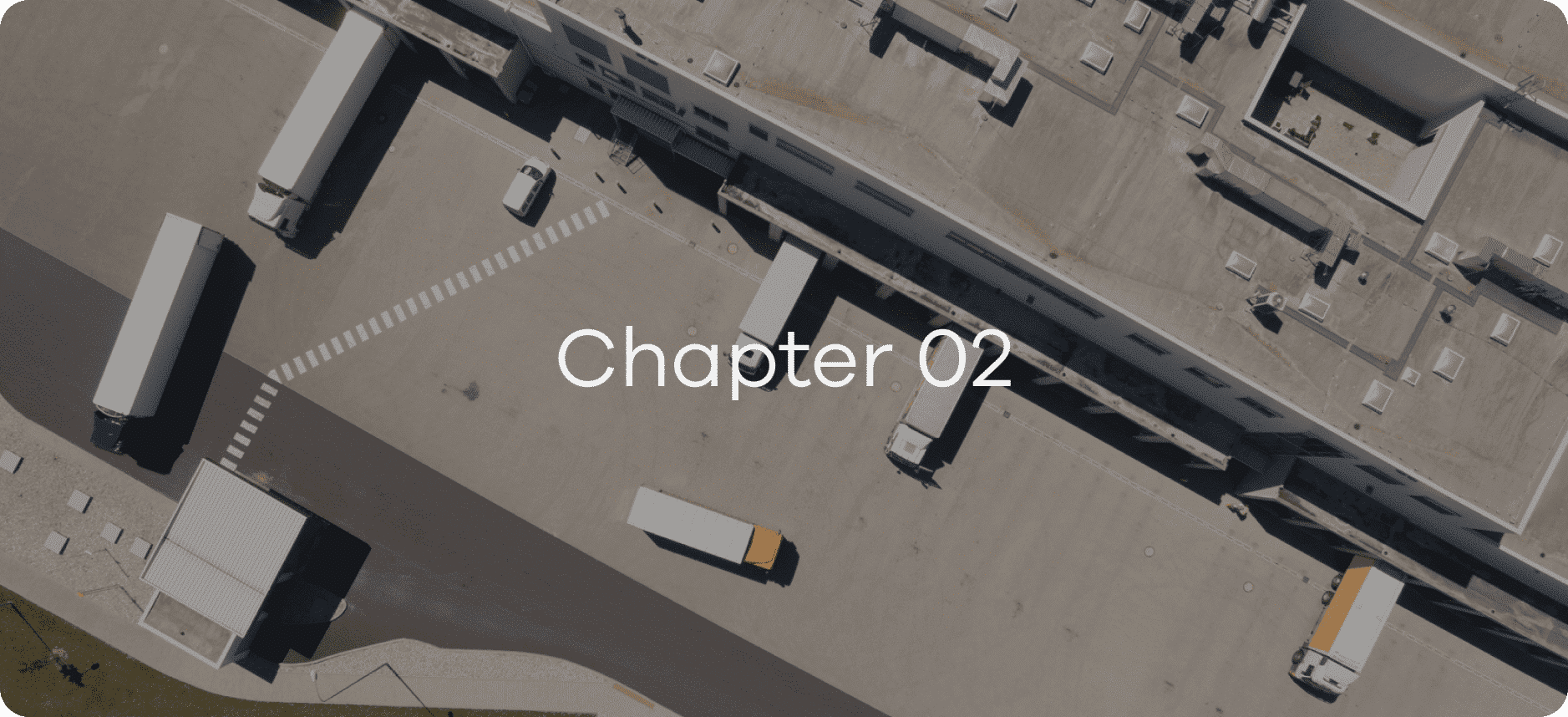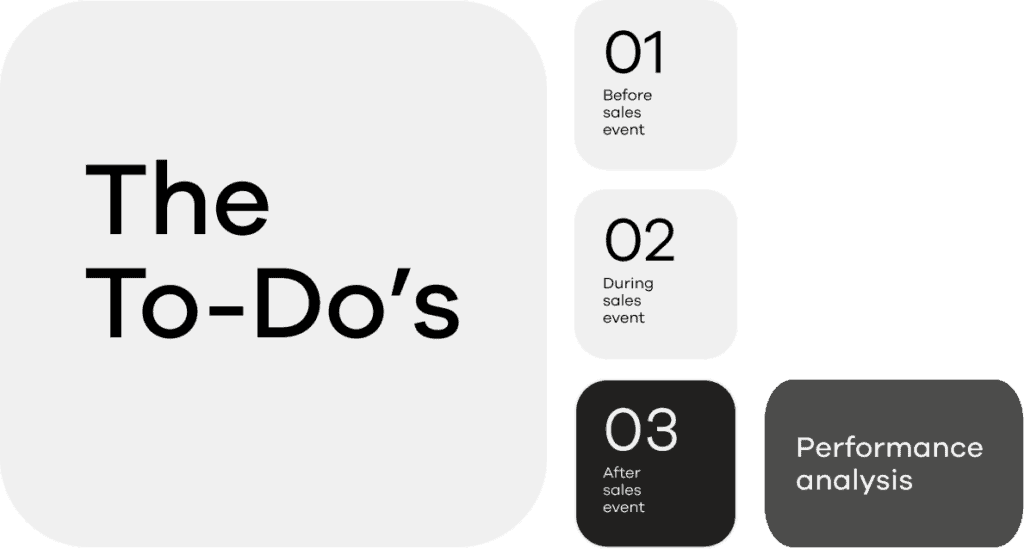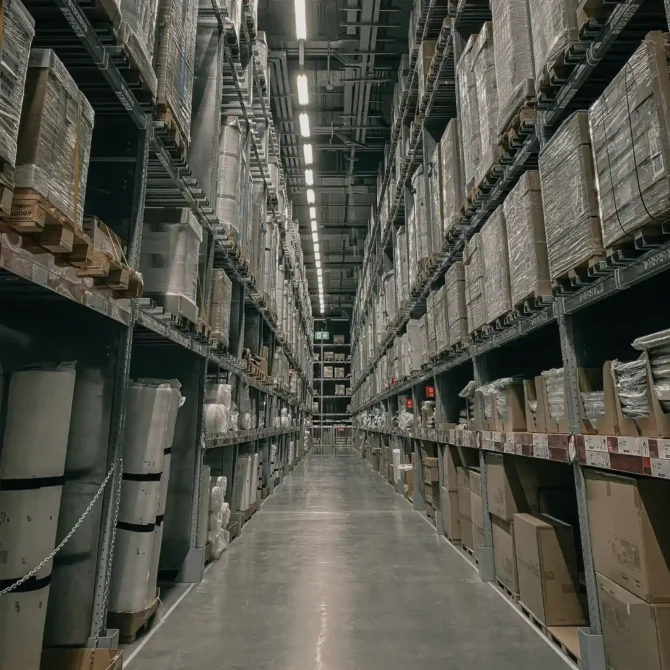Our logistics insights in a nutshell
To all the Operations, Customer Service and Logistics Teams out there: the biggest shopping season is approaching, are you ready to capture the whooping sales opportunity?
Consumer interest in Black Friday has been steadily growing year over year – for example, an average of 14% growth of interest in 2020 across the globe. However, it’s always a challenge for businesses to successfully prepare operations and inventory levels for seasonal events like Black Friday, Christmas or similar. And when it comes to the distribution logistics preparation, many things can go wrong which can lead to lost sales opportunities or a bad customer experience due to out-of-stocks, delivery delays or other customer complaints.
In this article, you will learn how seasonal demand impacts Black Friday logistics, Christmas fulfillment or other high order volume distribution logistics events. We also highlight what to look out for during your D2C and B2B order fulfillment and when working with 3PLs. Here’s the overview of our Guide – How to Handle Logistics Operations during Peak Demand:
Table of contents
Chapter 01 – Most common warehousing, fulfillment and distribution challenges for brands around Black Friday and Christmas.
Jump to section >
Chapter 02 – The logistics Do’s and Don’ts before, during and after seasonal events: From order fulfillment to performance benchmarking.
Jump to section >
Chapter 03 – Skyrocket your distribution logistics processes during peak seasons ever better: Get started.
Jump to section >

Sales peaks during Christmas and Black Friday logistics:
What about warehousing & fulfillment?
In general: The most common logistics challenges
Annual sales events like Black Friday or Cyber Monday are no longer just designed for brick-n-mortar shoppers. Allowing customers to buy products and services via eCommerce from any part of the world is the new normal. For instance, the popular online shopping site – Zalando – added more than 1 million customers during their “Cyber Week” with gross merchandise sales increasing by 35% in 2020. Shopify merchants broke records with over $5 billion in global sales and the platform saw about triple growth of sales in Germany.
Just by looking at these numbers, it is clear that your commerce business shouldn’t be left out to realise these skyrocketed sales opportunities. Yet, to crunch these groundbreaking records, Operations and Supply Chain Managers require comprehensive logistics and inventory planning and sophisticated operational processes.
In the following chapters, we highlight what the general logistical implications are when selling products to customers. We particularly want to shed light on the Do’s and Don’ts before, during and after Black Friday logistics or similar sales peaks. Overcome these challenges fast, otherwise you cash flows and profits will be at risk.
Sales peaks – typical logistics bottlenecks:
Threat of stock-outs and delivery delays make it difficult to keep the customer experience consistent for all orders.
Increased sales requires a higher amount of information exchange and efforts to keep operations running smoothly.
Limited reaction time if “things break” requires businesses to work with reliable data to make the right decisions in a timely manner.
Before deep diving into overcoming these challenges, we list down the most important communication processes when your sold products are being fulfilled by external logistics providers. And what businesses need to be aware of when it comes to handling logistics operations despite the peak demands on Black Friday, Cyber Monday or other sales events.
Specific operational challenges when working with 3PLs
By definition, seasonal demand indicates the predictable patterns of buyers’ needs in a certain time period that is due to regional celebrations and other marketing-driven sales events.
Although most of the national holidays and annual events like Black Friday or Easter are marked in everyone’s calendar, many commerce businesses are still struggling to determine the right time to kick-off their inventory and logistics preparations. Plus, when working with a Third-Party-Logistics (3PL) Provider, this means your products are professionally stored in an external warehouse, and orders are fulfilled and shipped whenever your sales team rings the bell.
But here’s the challenge – this also means: constant communication between stakeholders to ensure fast deliveries, for all orders, no matter the volumes.
The daily business with 3PLs: Data exchange for orders and stock
In the context of working with external 3PLs, exchanging order information refers to the process of sending order information from your sales channels to your fulfillment teams. Clearly, where and how data is exchanged highly depends on your business case and the fulfillment setup.
For example, if you work with various sales channels like an online shop, a marketplace (Amazon) and direct B2B sales, the first order data exchange usually occurs from your sales channels to your ERP system. And from here on, all consolidated order information need to be pushed to the corresponding fulfillment locations of your 3PLs.
The overall goal here is to provide information on the typical fulfillment questions in a timely manner:
- What SKUs (stock-keeping-units) does this order consist of?
- Who’s the customer (D2C vs B2B) – especially important when creating a personalized customer experience with customized messages
- Where’s the final delivery destination (shipping labels)?
- How’s the fulfillment process defined (e.g. maximum duration, FiFo, etc.) and how’s the parcel delivered (Carrier and shipping method)?
When it comes to this particular order data exchange, the consumer journey simply doesn’t stop when an order is placed. Operations, Marketing, Sales and Customer Service Teams also need to think about the after-sales-experience. A way to do so, is to keep your customers in the loop and provide enablement services to track their orders throughout the delivery process.
As a matter of fact, almost 90% of customers said that real-time order tracking makes their buying experience more enjoyable. And from a logistics point of view, this means to have the right data available to inform customers about order status and shipping tracking numbers at all times.
The same importance on data exchange applies for stock updates: When exchanging order information with your 3PL, you also need to be aware of how much stock is left across all warehouses so that your Procurement and Supply Chain Teams work with reliable data.
Reflecting product availability on your sales channels is particularly crucial to guarantee a flawless customer experience. It seems like a given To-Do that when products are being sold, one needs to ensure that there’s enough inventory across all warehouses in use in order to avoid fulfillment delays.
But that’s easier said than done: On the one hand, storing too little amounts of inventory may lead to customers being disappointed when products are unavailable for sales or shipments take ages. Imagine you’ve sold products through your online shop, but there’s no stock available in your warehouses of that specific SKU (stock-keeping-unit). On the other hand, overstocking can lead to a higher warehousing spend.
The importance here is to find the right balance between too little and too much stock: order reconciliation and constant data updates of available stock are key for reliable inventory management. By reconciling incoming orders with existing inventory, Operations Managers and Logistics Teams better understand stock flows. And this knowledge supports avoiding stock-outs and delivery delays and / or overstocking in the first place.
Constant 3PL communication: Data exchange for returns
When selling in large quantities, it can happen that some orders are being shipped back. In general, 20% on average of online orders are returned and the return rate can go up to 30% during holiday seasons. Although return rates fluctuate by different product categories (e.g. 12.2% in Apparel & fashion, 4.3% in beauty and 11.5% in Houseware), it can quickly reverse your sales event success.
When working with multiple warehouse providers, reverse logistics often face complex communication and execution processes. Upon return arrival, Logistics Teams need to notify Operations Managers once the pre-defined SLAs regarding “what to do with returns?” are executed.
Eventually, all order return information need to be updated with stock levels and pushed back to your internal commerce systems (e.g. your ERP system). At this stage, working with reliable data is uncompromising for your inventory management. Plus, your customer service teams need to have all return information available to make decisions on A) compensate with refund, B) send new order, or C) reimburse with online store credit / gift card.
During peak events, Operations and Customer Services teams are most likely over swamped with a high amount of incoming orders – and during these order peaks and busy times, one can easily overlook incoming returns.
Clearly, waiting to take action and solve order issues by 1-2 weeks is never a best case scenario. Over 70% of consumers expect a response within 30 minutes when they are looking for customer support. The longer it takes for you to respond, take action and solve a returned order, the more likely you are to lose your customers.

Black Friday logistics, Christmas or sales peaks are approaching – what now?
In the previous sections, we have showcased the typical logistics challenges during peak events when products are being sold. We also highlighted how important constant communication with 3PLs is. But most importantly, let’s take a step back and understand what needs to be done in the first place in order to avoid stock-outs, work more efficiently and create the best customer experience possible -. even during Black Friday logistics, Christmas or any other busy order peaks.
The To-Do’s to get your parcels delivered on time
Before the start of sales events like Black Friday, one needs to make sure to spend sufficient time for the planning of logistics teams, inventory and distribution processes. We identify three main stages to make sure to deliver your parcels on time, every time – no matter what high order volumes are expected.

Your fulfillment setup: Location and fulfillment services
The right location and operational excellence is the predominant approach
for a rockstar customer experience.
Depending on where your target audience sits (location) and to what customer type (D2C vs. B2B) you sell your products, your logistics operations need to be well prepared. In the end, no matter what sales efforts and how many products are being sold, the actual physical distribution logistics of your products needs to be aligned with your commerce efforts.
Especially if you want to guarantee fast shipping (e.g. Next-Day-Deliveries) without profit-margin-reducing shipping costs, pay great attention and take notes during the following section:
First, one needs to consider the right fulfillment setup that fits to your business plan. This means either choosing to work with external professional logistics providers (3PLs), or doing logistics activities in-house. Needless to say, the latter is not suitable for a high growth strategy, as it’s:
- highly capital-intensive to build or rent storage spaces and train own staff from scratch,
- limits your growth potential with given storage capacities, and
- what to do with all that binding storage and staff resources when your demand fluctuates?
Second, speeding up shipping times and reducing last-mile deliveries via a decentralized fulfillment approach could also be considered. When considering local 3PL warehousing services in order to store, fulfill and ship orders closer to where customers are, it’s paramount to think about:
- Where are your consumer shopping from (locations, sales channels, etc.) and to what type of audience are you selling to (D2C / B2B / both)?
- What order volumes are expected during peak seasons?
- And what are the big targets for your business this year, the next or in five years?
Surely, it’s a strategic stretch to choose a second local fulfillment center in your next target market if your business is expecting only 100-200 orders per month. But once certain volumes are to be expected, a “going local setup” improves not only the customer experience with faster shipments and reduced shipping costs, but also provides a more eco-friendly distribution logistics impact. If you are convinced to outsource your logistics operations, we have some guidance on how to choose the right 3PL providers.
The right IT Setup: Things break if done wrong
IT makes it easier – Pun intended.
Another strategic consideration when choosing the right fulfillment locations and partners is your IT setup. Or in other words: How do you exchange sales and warehouse data between your commerce operations and all warehouses in use?
When hundreds of orders are gushing in from your sales channels during Black Friday logistics, Christmas or similar events, the least convenient way to exchange data with your external 3Pls are via emails, CSV files or a soft IT integration. A soft IT integration might enable automated data exchange processes, but also comes with its limitations – especially when order information is faulty, needs editing or other order issues need to be resolved.
A major time saver and enabler are digital workflows powered by a unified smart software across all warehouse partners that allows your business to streamline, manage and execute all distribution logistics activities. This includes editing orders, uploading shipping labels, adding new SKUs, sending transfers between warehouses and many more activities that Operations and Logistics Managers need to take care of on a daily basis.
Key Functionalities
Select the right software to always keep track on:
Inventory Management: Don’t undersell or oversell
Choose proactive stock preparations before things break.
We talked about the warehousing setup in the previous sections. Now, businesses also need to pay more attention to onsite preparations like planning stock to ensure enough inventory across all locations.
There’s many great tools around – and most likely you find add-ons for your ERP-System that help you better plan stock with sophisticated demand forecasting modules. Surely, if there’s not enough stock produced in time, then during Black Friday, Cyber Monday or other sales events there’s a “no stock, no party” situation.
Besides guaranteeing sufficient inventory levels, your logistics team can pre-pack / pre-configure your best-selling items and typical orders in advance. This will drastically help speed up the fulfillment process for your warehouse partners during busy periods.
What’s also important is to define First-in-First-out (FiFo) fulfillment processes with 3PLs for product categories that are subject to BBDs. By doing so, your teams can avoid that the “oldest” products are being fulfilled at the very end. This is very important if your business is selling B2B (e.g. to supermarkets or retailers) and BBD sensitive products that need sufficient shelf time in a physical store.
Having a Plan B available for your distribution logistics is also paramount during Black Friday logistics: In case certain SKUs do run out or your first choice of carrier and shipping service provider face delays due to the vast amount of shipments during e.g. Christmas, having alternative fulfillment providers from other locations and shipping providers in line is crucial. By proactively routing certain orders, your teams can prevent order fulfillment delays in the first place and guarantee a fast order delivery at all times, no matter what volumes occur.
A bullet-proof website and eCommerce experience
Ensure that your online shop and other sales channels run smoothly at all times.
If your website crashes, there’s no way your business could capture sales from the rush hours during the holiday season, right? You want to avoid any issues regarding the IT infrastructure. Zalando reported that around 7,500 orders were placed per minute during Black Friday peak hours last year.
There’s no doubt you will expect higher web-traffic during peak seasons and the right server setup is key for that. But how to avoid a website crash besides high traffic? Well, here’s some guidance:
IT Guidance
How to avoid a website crash during high traffic:

Order and Stock Reconciliation
Ensure that your online shop and other sales channels run smoothly at all times.
Real time visibility on fulfillment performance is key to troubleshoot operational issues with 3PLs ahead of time before everything goes out of control. To have accurate order and stock reconciliation all the way through planned sales campaigns, you need to work with a smart logistics management software and 3PL team that links and updates incoming orders with stock levels.
What’s essential here is to understand what type of total stock and available materials are being stored in a warehouse. Here’s how your setup should look like:
Inventory Types
Service Level Agreement (SLA) Tracking
Always know who works well and where things break.
Tracking the performance of how long it takes your 3PLs to fulfill orders is also pivotal. Your teams don’t want to work with a “black box” across all your warehouses during your best sales cycles. Your Operations Teams need to have a clear understanding of how fast the orders are being fulfilled, especially when operational hiccups occur. When working with a 3PL, your Operations Teams should be able to recognize:
- Which orders are within your pre-defined cut-off times and SLAs?
- Are orders on time, delayed, or need attention due to unavailable SKUs, wrong shipping address or any other missing information?
Logistics Keywords
An SLA (Service-Level Agreement) is the contract widely used between companies and external partners. It manages the expectation and defines the responsibilities and availability of the service like maximum fulfillment durations per order, cut-off times, return handling, packaging requirements etc.
Cut-off times indicate the latest submission time of an incoming order to be fulfilled within a set time window and thus to meet the minimum delivery time. E.g. the SLA for maximum fulfillment durations is set to 2h: When the cut-off time is set at 4pm, this means all incoming orders received after 4pm will be processed on the next day within the pre-defined 2h of fulfillment duration.
Inventory transfers and automated order routing
Shift order fulfillment between product availability, distances and costs.
Fast inventory transfers can be a life-saver to avoid fulfillment and shipping delays. Ideally, stock transfers would not happen due to your careful pre-event inventory planning. But sometimes you need to act quick and send bulk shipments between warehouses to balance out low running SKUs and avoid unexpected stock-outs. You would preferably work with a digital tool to announce and send transfers to or between warehouses in order to restock inventory levels.
Also, having a smart order routing system in place is crucial to save time and act quick. Automated order routing refers to allocating incoming orders to the respective fulfillment location based on SKU availability, fulfillment and delivery times, shipping distance and associated costs.

Performance analysis and upcoming events
Learn from experiences and mistakes, become better every time.
Once your logistics team successfully delivers the last order associated with your sales event, it’s time to evaluate and benchmark fulfillment performances across all your warehouses. As mentioned, Black Friday logistics or similar sales peaks that drive up your overheads are not just a one-time occasion. Businesses need to be prepared for the next upcoming events and ideally learn from their experiences.
Understanding which team has been doing great, what went wrong and what to do next time ensures continuous performance improvement. Don’t forget to plan ahead as your logistics team needs to be aligned with your sales roadmap (e.g. What’s happening next quarter? Next year?).
Take time to research for the right fulfillment provider. Start from analyzing fulfillment providers, evaluate the logistics costs when planning your physical distribution logistics and kick-off fast order fulfillment and Next-Day Shipping to achieve a great customer experience.

Plan your Black Friday and the next big
sales peaks with everstox
It’s an exciting but busy time of the year for all online retailers and businesses. Yet, dealing with fluctuating seasonal demands has never been a simple task in the warehousing and logistics field. If you have planned to join millions of merchants and commerce businesses to welcome the upcoming and following shopping seasons during Black Friday, Christmas or similar, make sure to prepare your logistics operations with the right strategy and equitable tools since it could make or break the success of your sales events.
Our Logistics-as-a-Service (LaaS) platform connects merchants with business-case matching logistics partners to overcome logistics bottlenecks during peak seasons. Besides, we ensure smooth logistics operations all year round with our tech-driven features for better order and inventory management, automated fulfillment operations and performance tracking.
What’s more, working with a professional 3PL and a tailored fulfillment solution helps your business unlock your full commerce potential. Contact our team to find the right 3PLs from our Europe-wide network today.
Our latest
logistics insights
From logistics costs to fulfillment tricks, read our latest insights to win over your next customers.

What is 4PL: Definition and Differences in Logistics
What exactly does 4PL mean and how does it differ from 1PL, 2PL, and 3PL?
In this article, we explain what 4PL fulfillment is, what a 4PL provider offers, and how to find the right fulfillment model for your business.
Read More
3PL vs. 4PL Logistics: An Overview
What is 3PL, 4PL and how do these two logistics models differ from each other? In this article, we get to the bottom of the most important differences and explain when which model is more suitable for you.
Read More
What is 3PL: Definition and Differences in Logistics
What is 3PL fulfillment, and how does this logistics model differ from 1PL, 2PL, and 4PL? In this article, we explain everything you need to know about 3PL.
Read More